Three years since it was revealed in concept form, the Hennessey Venom F5 is finally on track to make its production-spec debut by the end of 2020.
Speaking on the Drive On podcast, company founder John Hennessey said the hypercar had originally been scheduled to appear at California's annual Pebble Beach motoring extravaganza, which was cancelled as a result of the coronavirus pandemic. He is yet to confirm exactly when the F5 will fully break cover, but maintained it will be before 2021.
In production guise, the Venom F5 will have a price tag of £1.2 million and a top speed projected by the company to exceed 300mph.
The power to get it to this headline-grabbing top speed comes from a twin-turbocharged V8 producing in excess of 1600bhp. Hennessey aims for the F5, which is named after the most powerful storm on the Fujita scale, to be the fastest road car yet made.

Weighing in at 1338kg, which is little more than a Ford Fiesta, the Venom uses carbonfibre for the entirety of its aerodynamically optimised body, which has a drag coefficient of 0.33.
Unlike previous models, which have been based on the Lotus Exige, Hennessey has developed and built this latest car in-house from the ground up, including the engine, chassis and body. A paddle-shift, single-clutch seven-speed gearbox is used, and the car is rear-wheel drive.
No 0-62mph time has been revealed, but 0-186mph (300kph) will come in less than 10sec, and the company plans to break the 0-400kph-0 record comfortably, predicting a time of under 30sec. This would mean smashing Bugatti's time of just under 42sec, and Koenigsegg's record of 36.44sec.
Just 24 examples will be made, and it is yet to be confirmed whether any will come to Europe.
Read more
Hennessey: ‘Being the fastest in the world really matters’​
The fastest production cars in the world​
Hennessey to tune new C8 Corvette to 1200bhp next year​

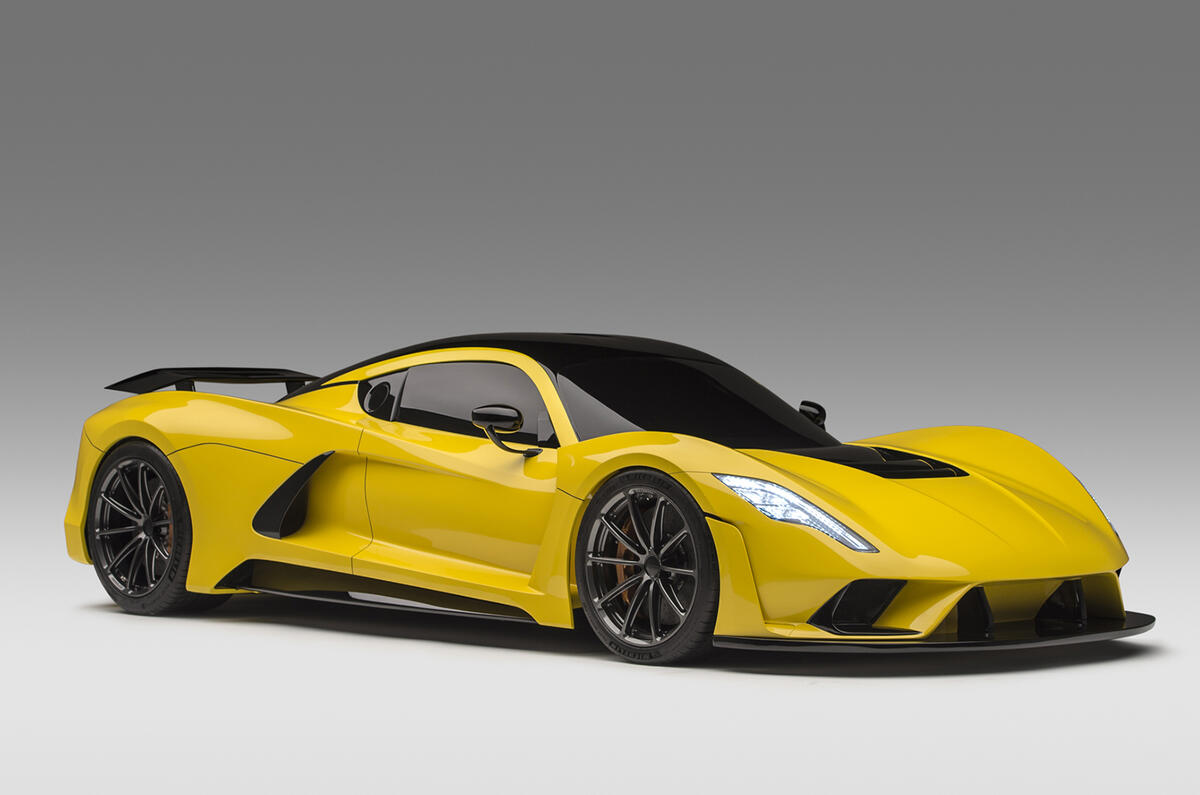

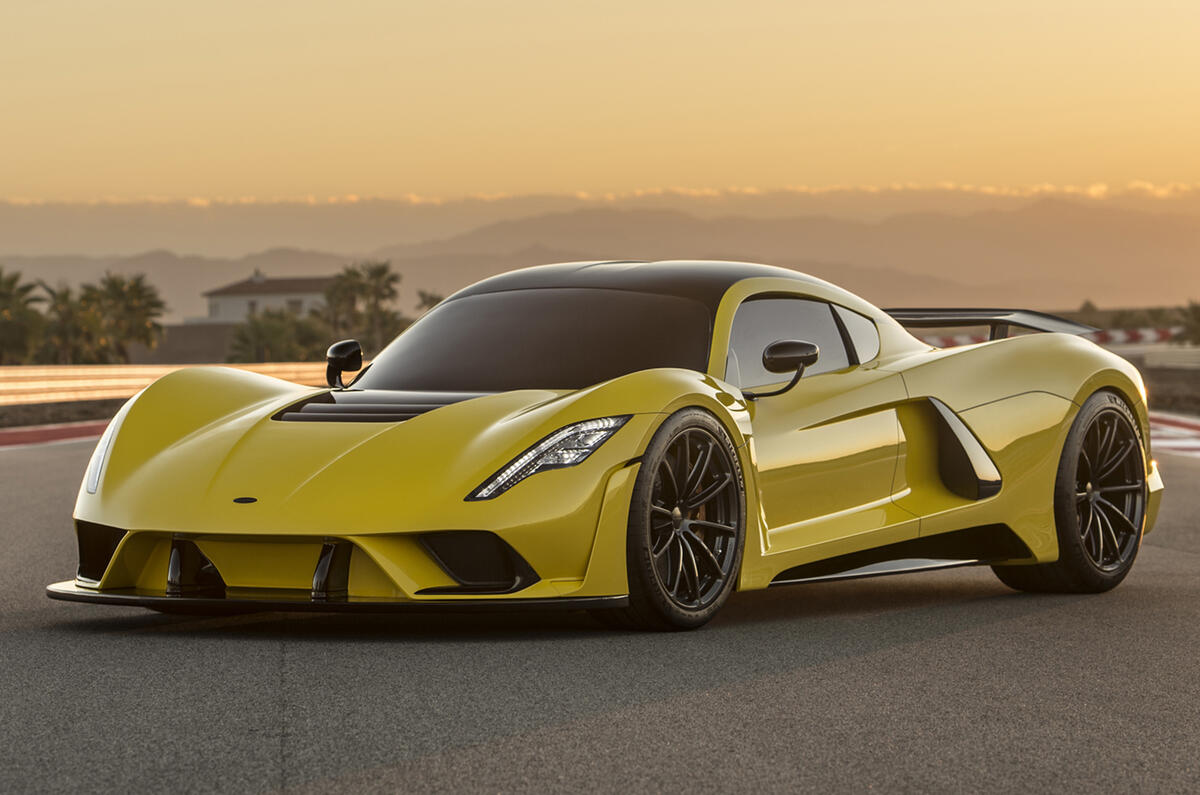
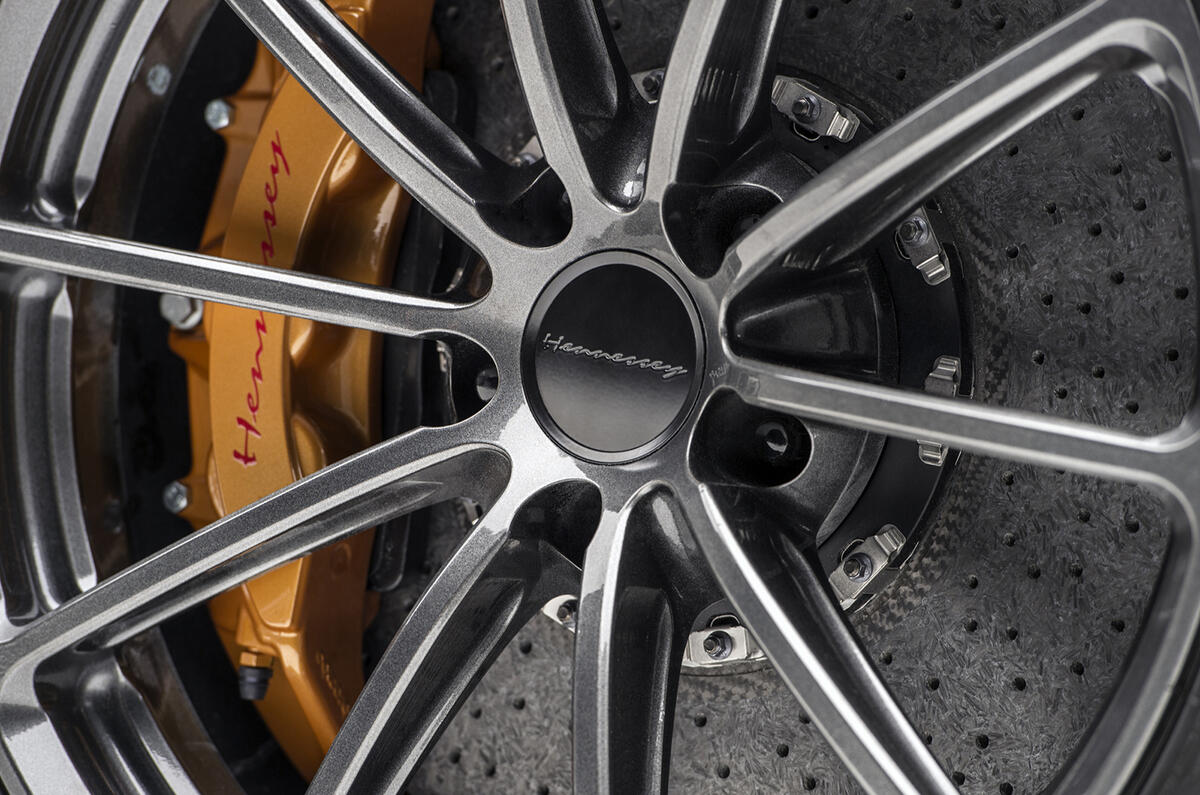




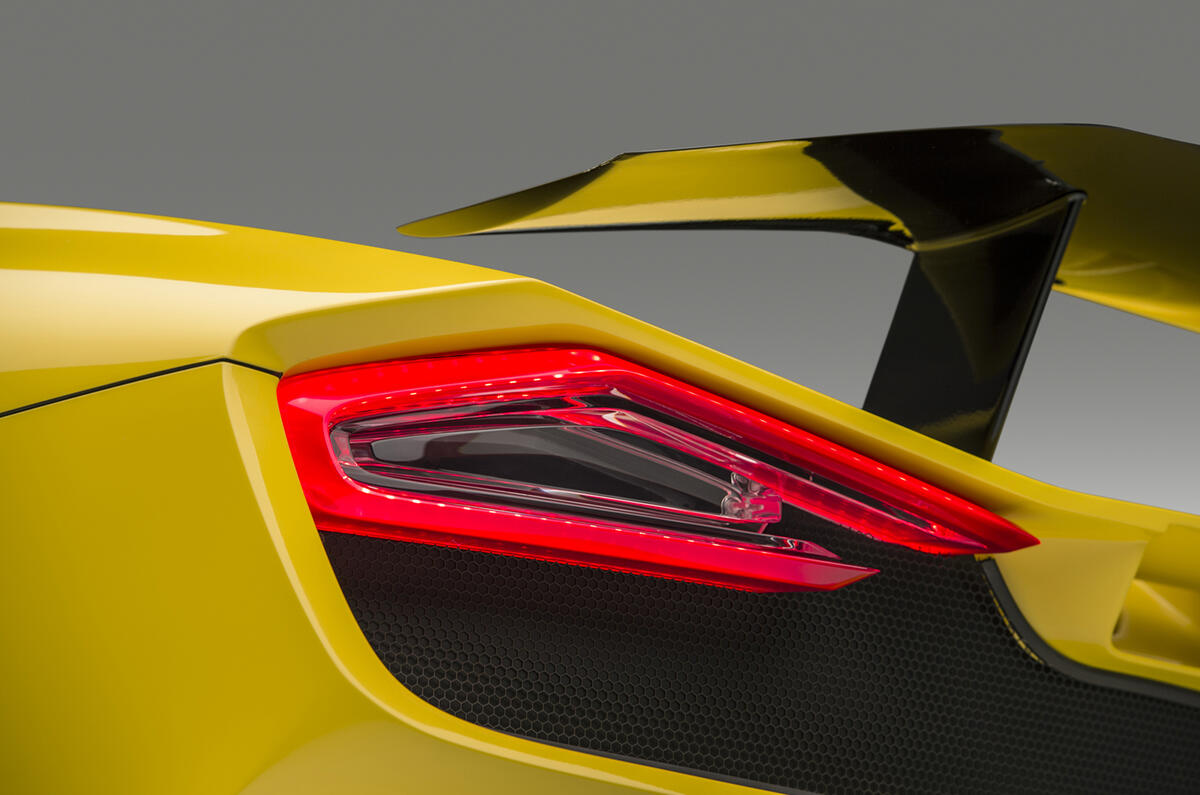


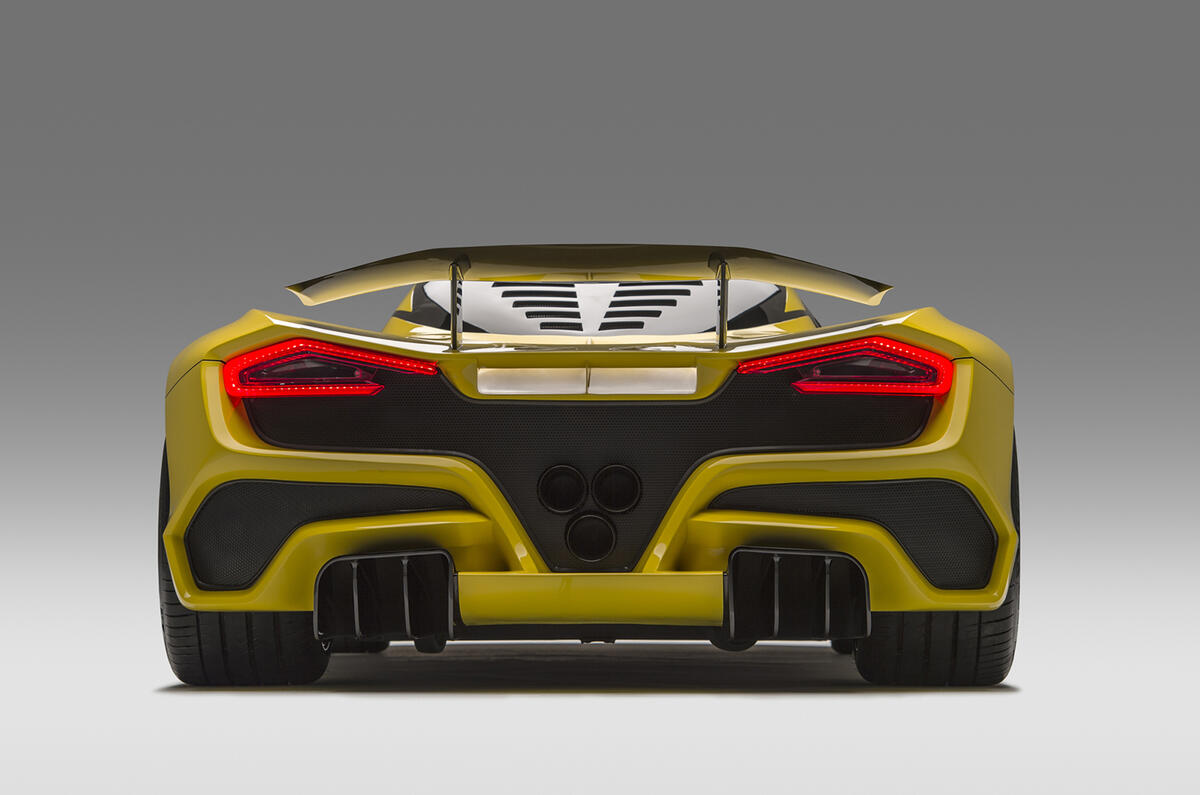


























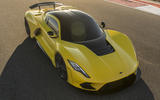



Join the debate
Add your comment
Tyres
As I understand it, and I'm no engineer, there are two issues that limit the durability of tyres, especially at high speeds, the heat generated from the rotation of the tyre over the surface, and the weight pressing the tyre into the surface. Obviously, the faster the tyre rotates the greater the friction generated, and, depending upon aerodynamic downforce, the greater the weight pressing upon the tyre. The one constant here is the weight of the car. The Bugatti weighs considerably more than either the Koenigsegg or Hennessey. Thus tyres that are designed to support the weight of a Chiron, would, one might suppose, be able to support a significantly lighter car safely to a higher speed, as the weight loading would be less.
RF Tyres?
Are the Tyres fitted to a Chiron RF's?, anyone know?
Ultimate.
It's going to be a limited run, all are probably sold even before there half built,nearly all who buy one won't even drive it because they haven't got the experience, or they'll hire a pro , ex F1 driver to Max it down a very long runway, yeah, top speed is irrelevant, it's how fast it reaches speeds, 186mph in under ten seconds, 0-400-0 in under thirty seconds,now, to me, that's more impressive,and the tyres might have a better chance of surviving along with the driver of course.
Anyone have a runway for sale?
Where the hell would you put this to the test or more accurately, who would have the guts to put this to the test. 300mph!? 1600BHP and rear-wheel drive? Hope it's got traction control. Automotive dick-swinging methinks.